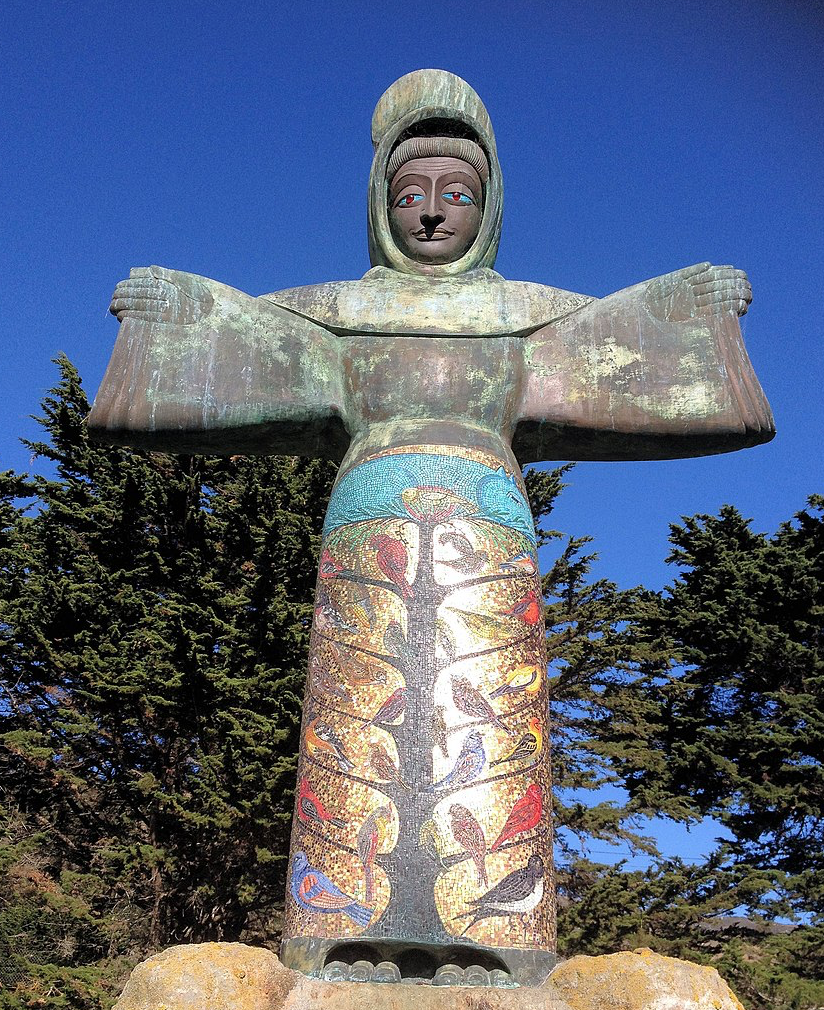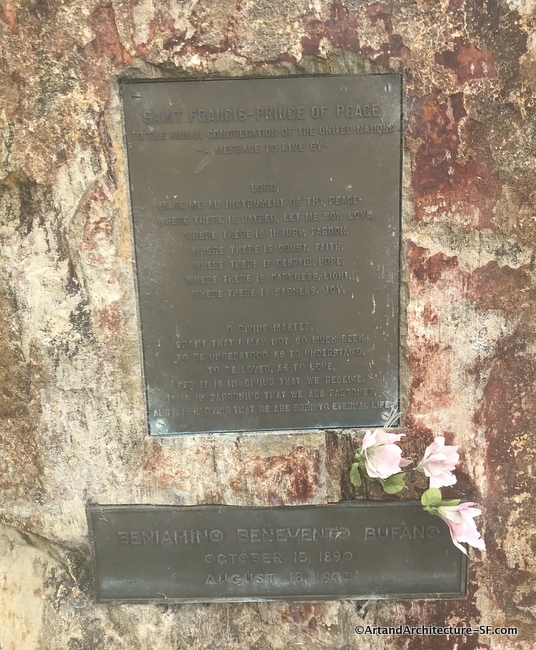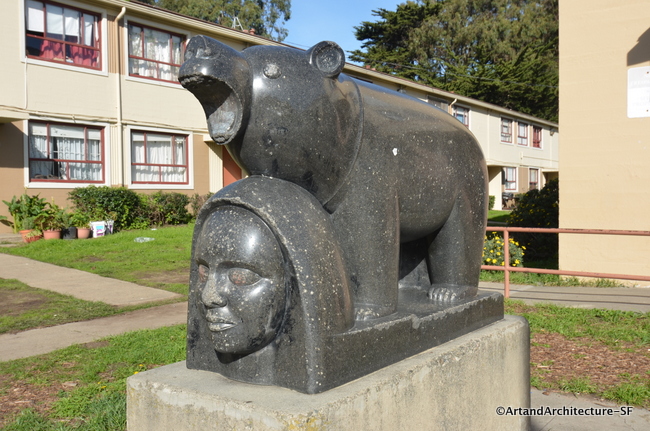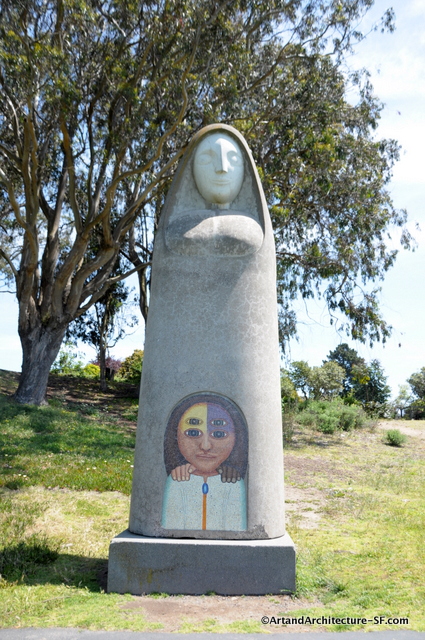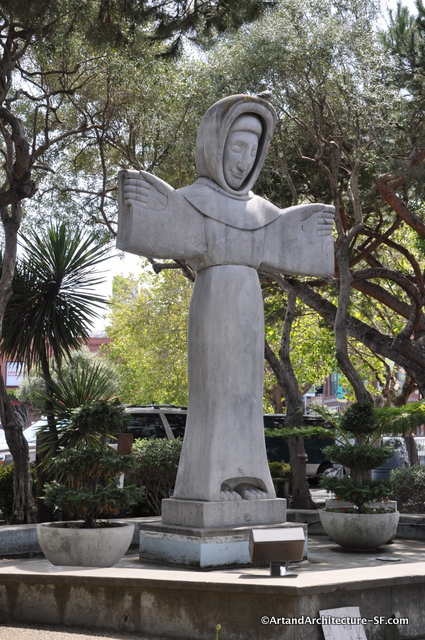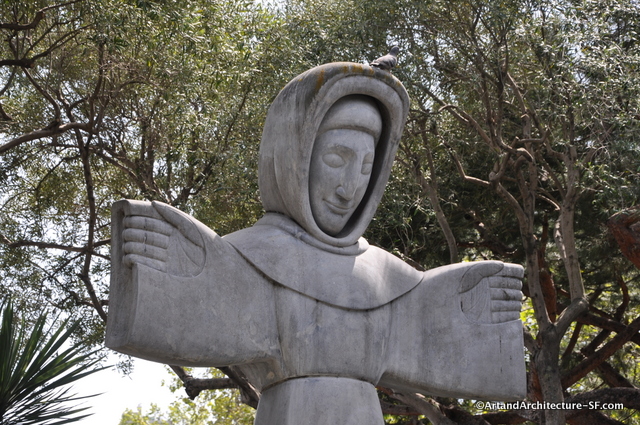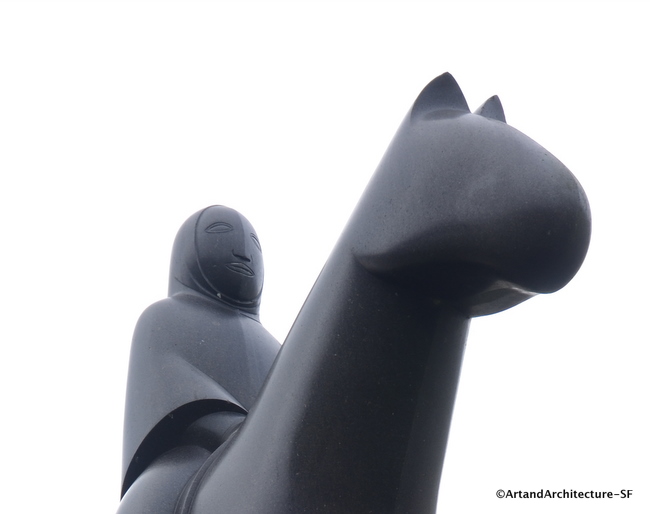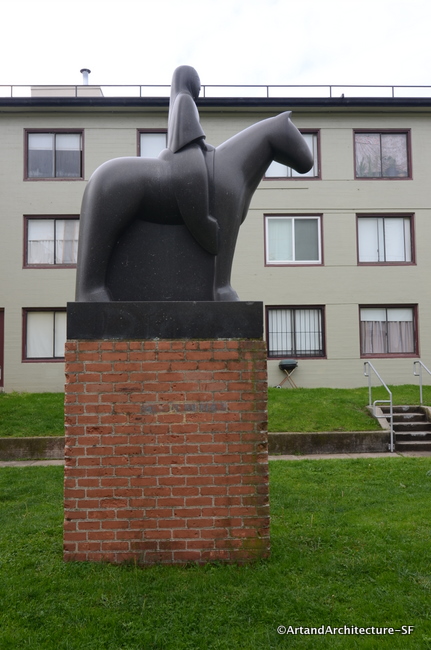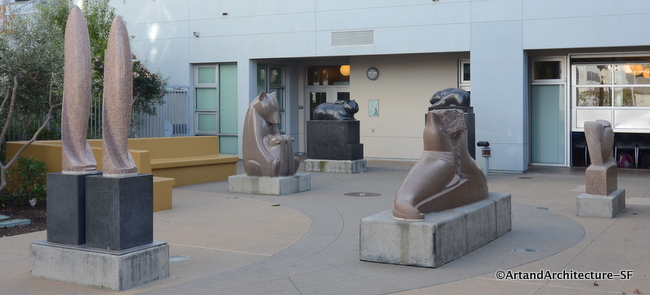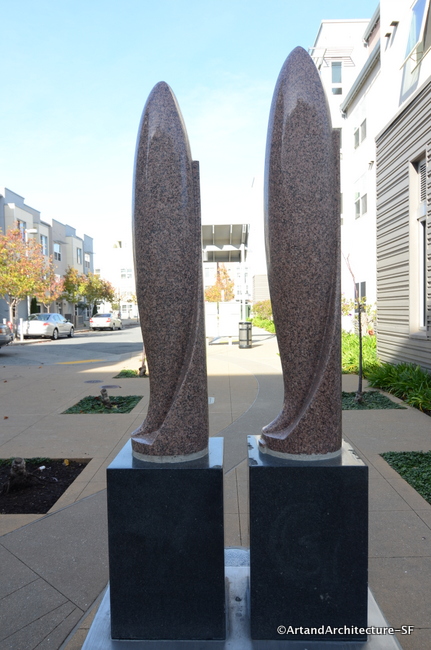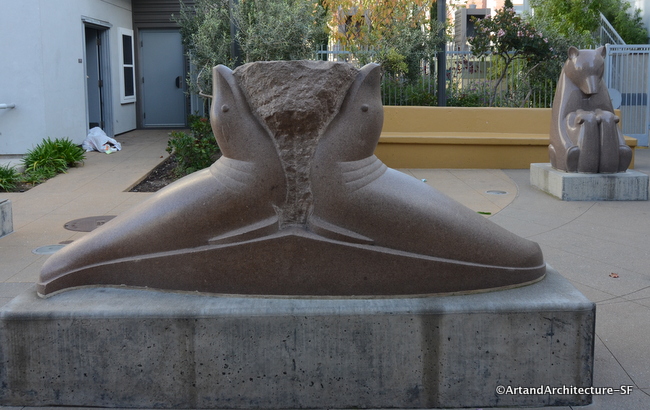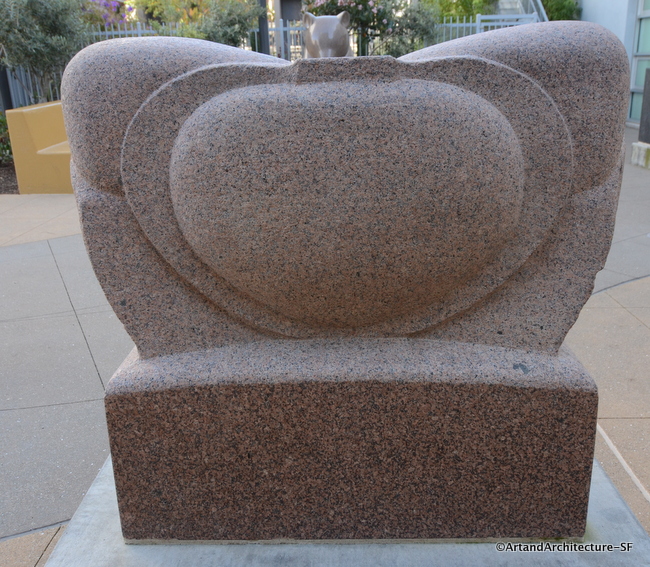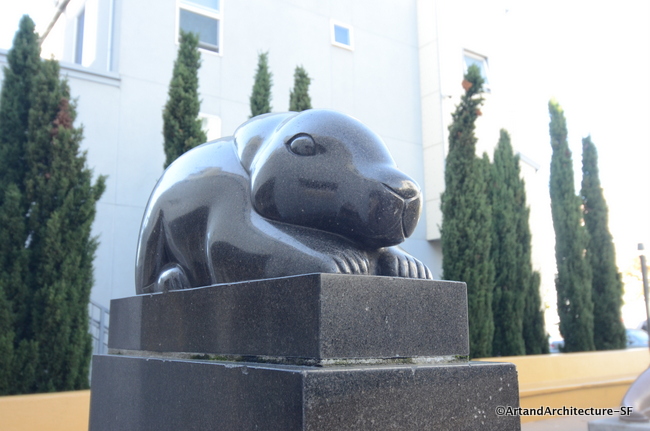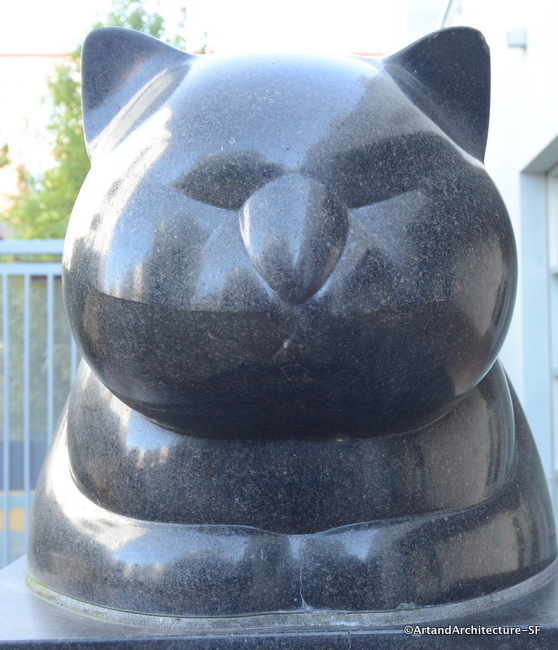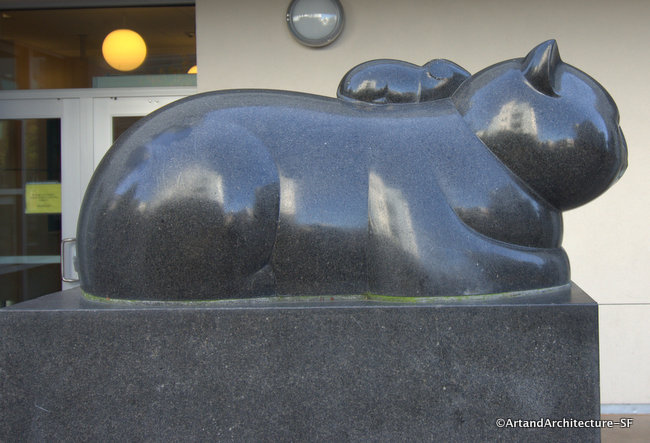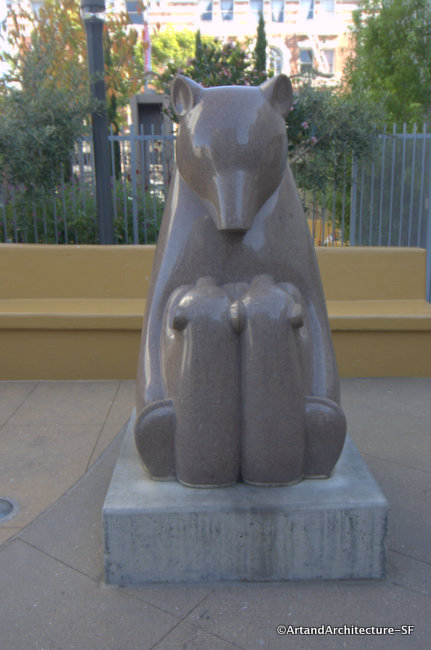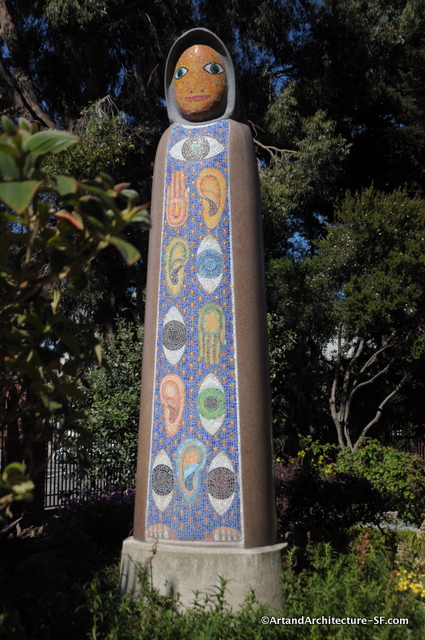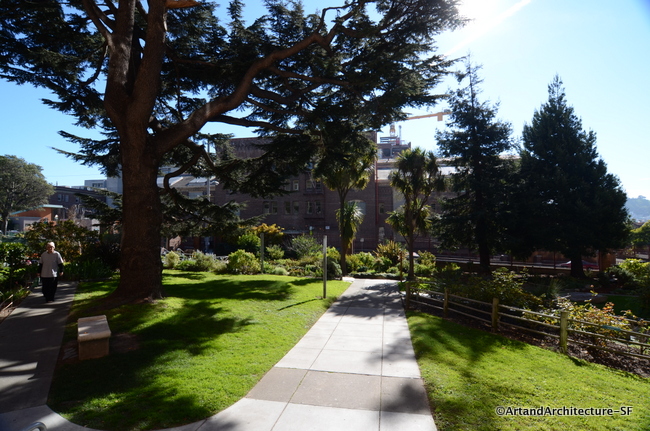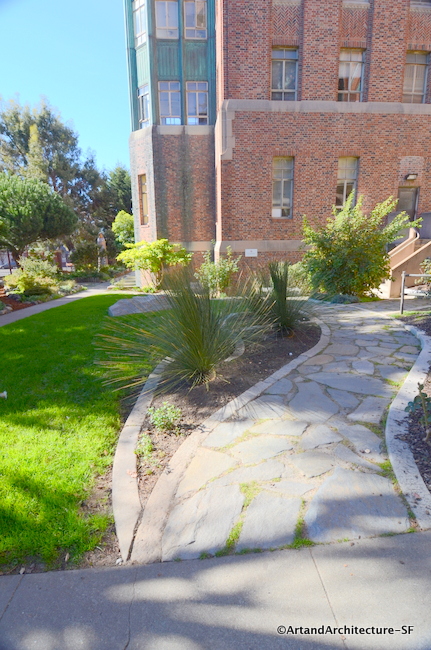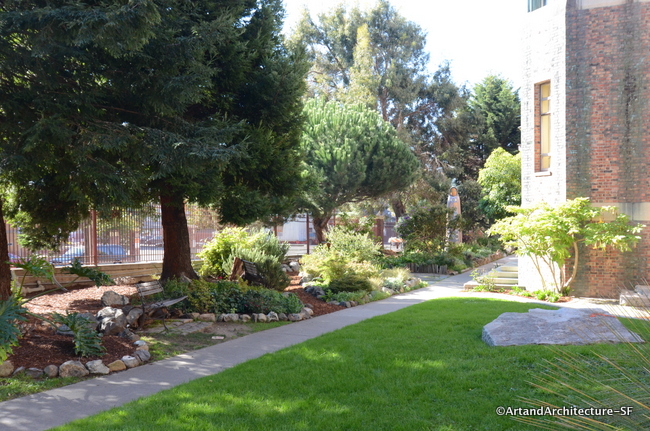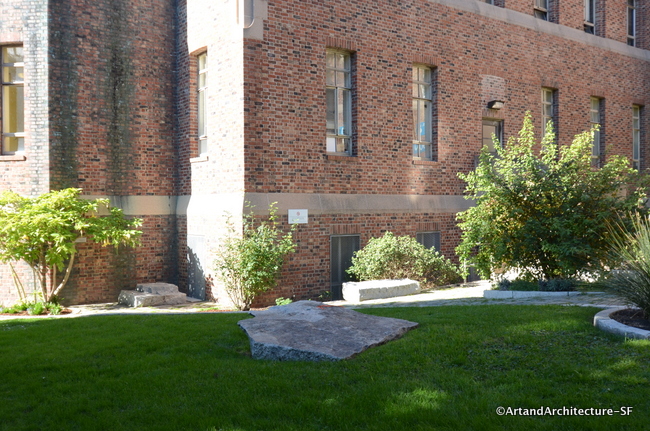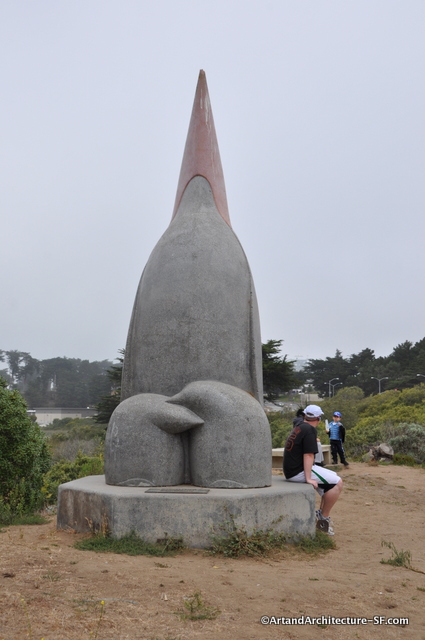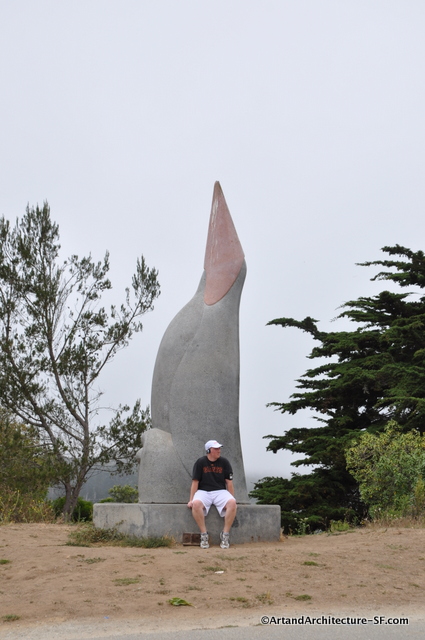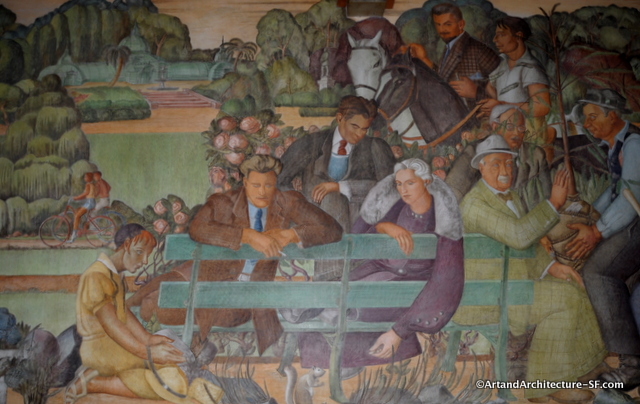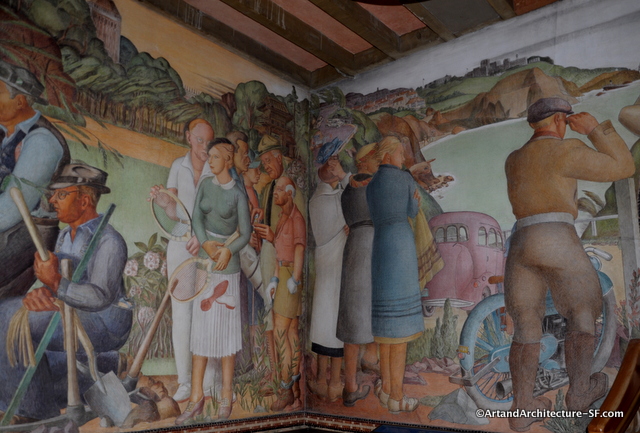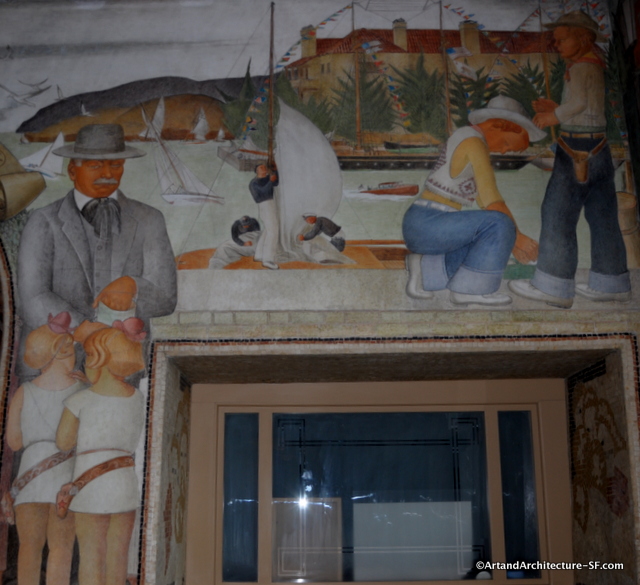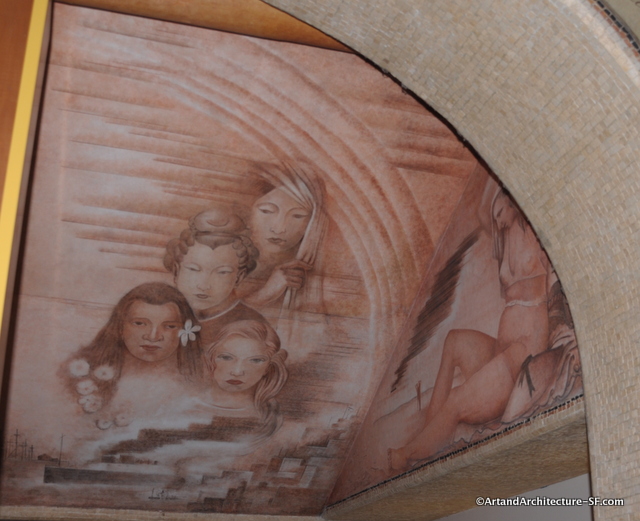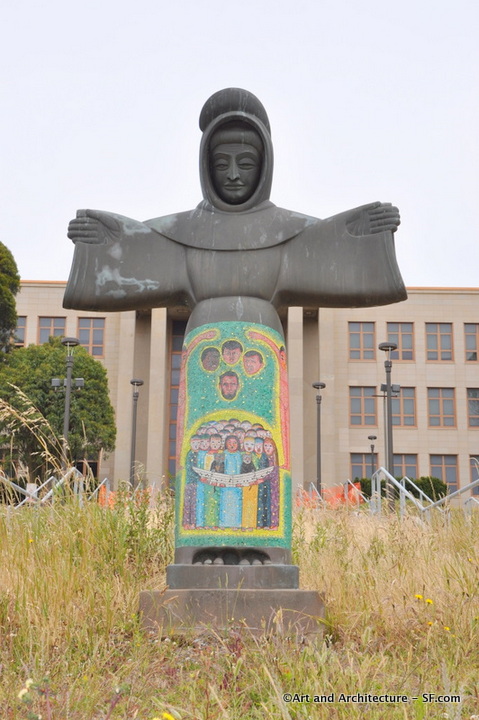800 Brotherhood Way
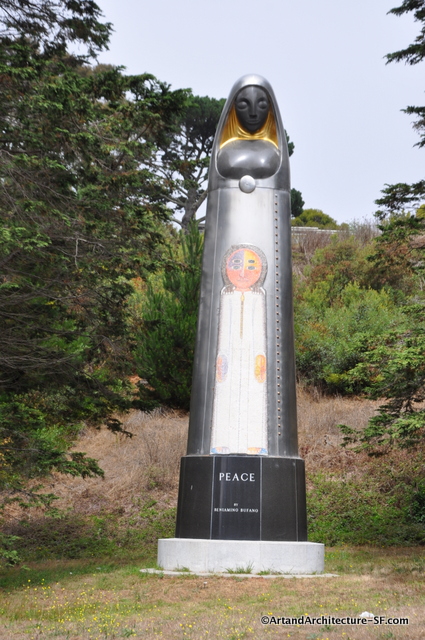 Peace by Benny Bufano
Peace by Benny Bufano
Located at the entrance to the San Francisco Airport for almost forty years”Peace” was relocated to make way for a parking garage. After restoration it was moved to Brotherhood Way, where it stands now.
Benny Bufano was born in Italy in 1898, Beniamino Benvenuto Bufano came to the United States at young age with his family. After studying art in New York City, he eventually moved to San Francisco where he taught both at UC-Berkeley and at the California College of Arts and Crafts in Oakland. He died in 1970.
On the back of the circular base is inscribed:
Dedicated April 19, 1958
George Christopher, Mayor
On the front of the circular base is inscribed:
Presented to the Citizens of San Francisco by the San Francisco Chronicle
Dedicated to the Brotherhood of Man and the Ideal of Peace Among all the Peoples of the World
UPDATE – April 17, 2013 – Where is the statue?
Brotherhood Way was originally called Stanley Way. But in 1958, under Mayor George Christopher, the city, which owned all of the land on the south side of the street, turned that property over to a long list of religious institutions and renamed the street to reflect its role as a place for houses of worship. It’s now home to six churches or synagogues and nine religious schools. It has its own (religious) neighborhood association.
On May 19, 2005, the Planning Commission approved an expansion of the Park Merced apartment complex to add up to 182 units on the north side of the street.
There has been a contentious battle over this plan ever since.
Opponents of the project say the area was set aside for educational and religious uses, not housing — and they argue that the expansion of Park Merced will add too much congestion to the area. Supporters say the west side of town needs to accept more housing and more density.
In April of 2010 a Letter of Agreement was executed between the San Francisco Arts Commission and the project property owner to protect the Bufano sculpture adjacent to the project site during project construction. The Agreement identifies a specific site for relocation of the statue. The Agreement also sets forth specific tasks and conditions for de-installing, storing, and re-installing the sculpture at a time agreed upon by the project sponsor and the Arts Commission. If you are interested in keeping up to date on the progress, here is the link to the SFAC page about the project.
As of February 1, 2013 all the plans have been approved by the City, however, the opponents are continuing their battle in court. The trees have been removed, the water and sewer pipes are being prepared to be installed and the developer is moving forward. The Bufano has been removed and I will report where Peace ends up when this is all over.
A little about Park Merced: Metlife owned and carefully maintained the property until the early 1970s, when it sold it to Leona Helmsley and the property began to deteriorate. There were a succession of owners and management companies beginning in the late 1990s. The commercial areas of the development were sold off to investors, and other parts sold to the California State University system. As of 2008, 116 of the original 150 acres are owned and maintained by a single investor, who purchased the property for $700 million and has committed $110 million in upgrades. The architecture of Park Merced is very unique and I hope to write a post about that in the near future.
2018
This piece is back in its original position off of Brotherhood Way. It is now amongst the homes of Park Merced but still visible from the street.

